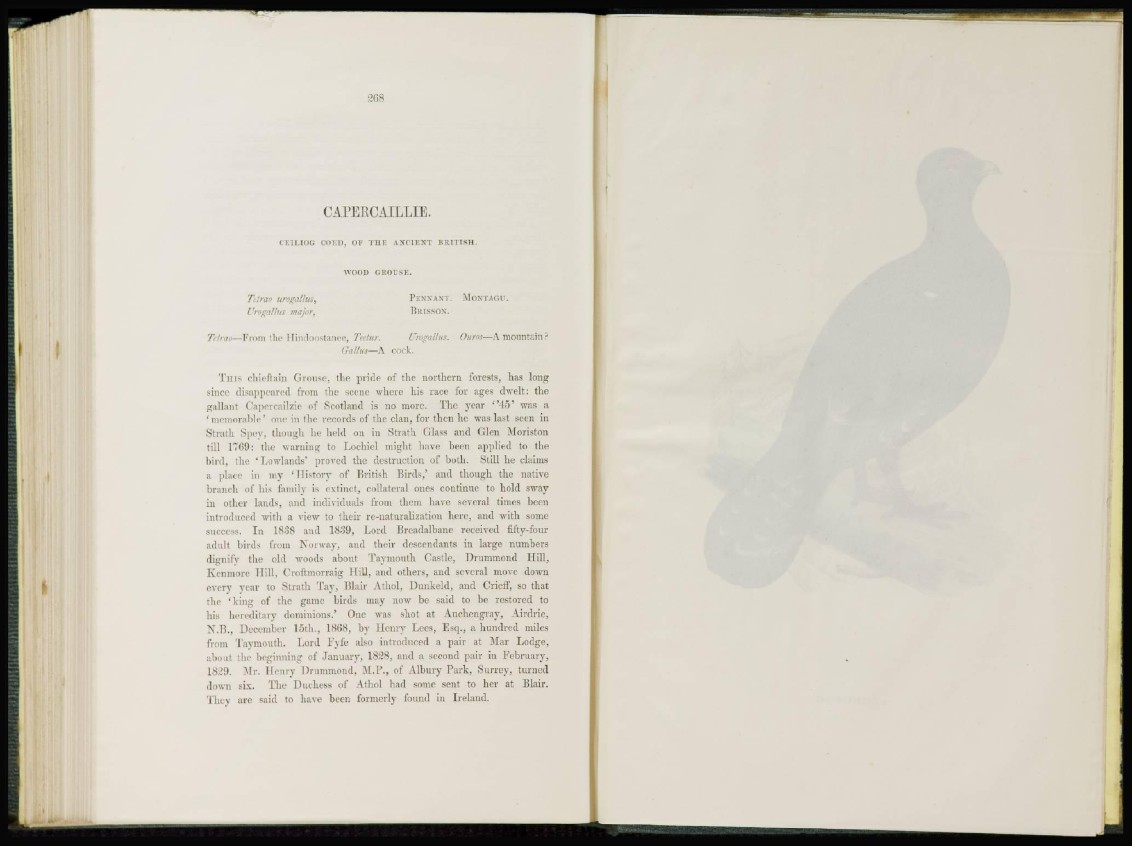
C APERC AILEIE.
CEILIOG COED, OF Till" \ N C I K N T B R I T I S H.
WOOD GROUSE.
Tifrao uroga flits,
Urogallus major,
PENNANT. MONTAOU.
BRTSSON.
Urogallus, Our'• 'iv—A mountain ?
Tetrao—From the Hindoostanee, Teetur. C
Gallia—A cock.
T i n s chieftain Grouse, the pride of the northern forests, has long1
since disappeared from the scene where his race for ages dwelt: the
gallant Capercailzie of Scotland is no more. The year '*45* was a
'memorable* one in t h e records of the clan, for t h e n he was last seen in
Strath Spey, though he held on in Strath Glass and Glen Moriston
till 1769: the warning to Lochiel might have been applied to the
bird, the 'Lowlands' proved the destruction of both. Still he claims
a place in my ' History of British Birds,' and though the native
branch of his family is extinct, collateral ones continue to hold sway
in other lands, and individuals from them have several times been
introduced with a view to their rc-naturalization here, and with some
success. In 1838 and 18o9, Ford Breadalbane received fifty-four
adult birds from Norway, ami their descendants in large numbers
dignify the old woods about Tavmouth Castle, Di unimond Hill,
Kenmore Hill. Croftmorraig Hill, and others, and several move down
every year to Strath Tay, Blair Athol, Dunkeld, and Crieff, so that
the 1 king of the game birds may now be said to be restored to
his hereditary dominions.1 One was shot at Auchengray, Airdrie,
N . l ) . . December 15th., 1868, by Henry Lees, Esq., a hundred miles
from Tavmouth. Lord Fyfe also introduced a pair at Mar Lodge,
about the beginning of January, 1828, and a second pair in February,
1829. Mr. H e n r y Druinmond, M.P., of Albury Park, Surrey, turned
down six. The Duchess of Athol had some sent to her at Blair.
Thej are said to have been formerly found in Ireland.